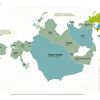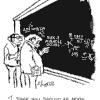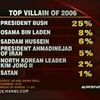10.7.2009 | 22:12
BIS bankanum blandaš inn ķ japanska skuldabréfasmygliš
BIS bankanum ķ Basel ķ Sviss, eša sešlabanka sešlabankanna ķ heiminum og sķšasta vinnustaš nęstkomandi sešlabankastjóra į Ķslandi hefur nś veriš blandaš ķ japanska skuldabréfasmygliš ķ smįbęnum Chiasso. Žar voru tveir menn gripnir meš 17.000 milljarša kr. ķ bandarķskum skuldabréfum.
Tveir fimmtugir Japanir voru nżlega stöšvašir af ķtölsku fjįrmįlalögreglunni, Guardia di Finanza, ķ jįrnbrautarlest ķ bęnum Chiasso, smįbę į landamęrum Ķtalķu og Sviss. Žeir höfšu ķ fórum sķnum bandarķsk rķkisskuldabréf sem hafa veriš til ķtarlegrar rannsóknar en lķklegt žykir aš skuldabréfin séu fölsuš. Markašsvirši bréfanna er um 17 žśsund milljaršar króna.
Talsmašur leynižjónustu Bandarķkjanna hefur komist aš žeirri nišurstöšu aš rķkisskuldabréfin vęru fölsuš en nś viršist žaš ekki vera svo augljóst.
Komiš hefur ķ ljós aš Japanirnir tveir voru starfsmenn japanska fjįrmįlarįšuneytisins. Aš auki er annar mannanna bróšir Toshiro Muto, sem lét śr embętti ašstošarsešlabankastjóra Japans fyrir skömmu.
Samkvęmt heimildum, įttu Japanirnir aš flytja rķkisskuldabréfin til Sviss vegna žess aš japanska rķkisstjórnin hafši miss trśna į žvķ aš rķkisstjórn Bandarķkjanna gęti stašiš ķ skilum viš skuldbindingar sķnar og žar meš stašiš ķ skilum į śtgefnum rķkisskuldabréfum sķnum. Ķ Sviss var markmiš žeirra aš selja hluta af skuldabréfunum en žar ķ landi hefur rķkt mikil bankaleynd.
Önnur kenning sem er į floti samkvęmt frįsögn ķ Asianews er aš žessir opinberu starfsmenn hafi veriš aš smygla skuldabréfunum frį rķkissjóši Japan yfir ķ BIS bankann. Skżringin er aš skuldabréfin hafi įtt aš létta BIS róšurinn viš aš mynda nżja ofurmynt ķ heiminum sem gęti tekiš viš dollaranum sem helsta gjaldeyrisforšamyntin.
Žaš er mjög erfitt aš trśa žvķ aš rķkisskuldabréf uppį 134,5 milljarša Bandarķkjadala gętu fariš innķ fjįrmįlakerfiš įn žess aš nokkur taki eftir žvķ.
Til aš stašfesta umręddan oršróm ętlaši śtvarpsmašur hjį Turner Radio News, sem skošaš hefur mįliš ofan ķ kjölinn og upplżst almenning um mįlavexti, aš reyna aš uppljóstra rašnśmerum skuldabréfanna. Įšur en hann gat gert žaš var hann handtekinn og fęršur ķ fangelsi.
Ķ dramatķsku sķmtali frį fangelsinu lżsti śtvarpsmašurinn žvķ aš handtaka hans vęri pólitķsks ešlis og vęri ķ tengslum viš įšurnefnd skuldabréf. Hann hafi hreinlega veriš handtekinn vegna ótta yfirvalda viš aš uppljóstra um uppruna skuldabréfanna.
Fullyrt er aš handtaka hans hafi ekkert meš hugsanlegt sviksamlegt athęfi hans aš gera og žaš gerir mįliš enn flóknara.
[sjį meira um mįliš ķ fyrri bloggfęrslu]
http://visir.is/article/20090710/VIDSKIPTI07/253256383/-1
Um bloggiš
Baldur Fjölnisson
Nżjustu fęrslur
- Torfi Stefįns bannašur ęvilangt
- OL ķ skįk. Landinn malaši Kenķu ķ 9. umferš
- OL ķ skįk: Landinn ķ 88. sęti eftir 8 umferšir
- Mešaljónar ķ skįkinni
- Baggalśtur - Sagan af Jesśsi
- Eitraš fyrir lżšnum?
- Óvenjulega döpur taflmennska innfęddra einkennir Reyjavķkursk...
- U.S. Rushes Coolant to Japanese Nuke Plant After Earthquake
Heimsóknir
Flettingar
- Ķ dag (9.10.): 0
- Sl. sólarhring: 1
- Sl. viku: 6
- Frį upphafi: 0
Annaš
- Innlit ķ dag: 0
- Innlit sl. viku: 5
- Gestir ķ dag: 0
- IP-tölur ķ dag: 0
Uppfęrt į 3 mķn. fresti.
Skżringar
Bloggvinir
-
 Agný
Agný
-
 Alfreð Símonarson
Alfreð Símonarson
-
 Andrea J. Ólafsdóttir
Andrea J. Ólafsdóttir
-
 Bjarni Harðarson
Bjarni Harðarson
-
 Bjarni Kjartansson
Bjarni Kjartansson
-
 Björgvin Gunnarsson
Björgvin Gunnarsson
-
 Brynjar Jóhannsson
Brynjar Jóhannsson
-
 FLÓTTAMAÐURINN
FLÓTTAMAÐURINN
-
 Eygló Þóra Harðardóttir
Eygló Þóra Harðardóttir
-
 FreedomFries
FreedomFries
-
 Fríða Eyland
Fríða Eyland
-
 Félag um stafrænt frelsi á Íslandi
Félag um stafrænt frelsi á Íslandi
-
 Georg P Sveinbjörnsson
Georg P Sveinbjörnsson
-
 Gestur Guðjónsson
Gestur Guðjónsson
-
 Gils N. Eggerz
Gils N. Eggerz
-
 Gullvagninn
Gullvagninn
-
 Gunnar Skúli Ármannsson
Gunnar Skúli Ármannsson
-
 Guðrún María Óskarsdóttir.
Guðrún María Óskarsdóttir.
-
 Gísli Hjálmar
Gísli Hjálmar
-
 Hagbarður
Hagbarður
-
 Halla Rut
Halla Rut
-
 Haraldur Haraldsson
Haraldur Haraldsson
-
 Hilmar Kári Hallbjörnsson
Hilmar Kári Hallbjörnsson
-
 Hlekkur
Hlekkur
-
 Ingibjörg Álfrós Björnsdóttir
Ingibjörg Álfrós Björnsdóttir
-
 Jens Guð
Jens Guð
-
 Jóhannes Ragnarsson
Jóhannes Ragnarsson
-
 Jón Aðalsteinn Jónsson
Jón Aðalsteinn Jónsson
-
 Jón Ragnarsson
Jón Ragnarsson
-
 Jón Steinar Ragnarsson
Jón Steinar Ragnarsson
-
 Jónína Benediktsdóttir
Jónína Benediktsdóttir
-
 Karl Tómasson
Karl Tómasson
-
 Kári Magnússon
Kári Magnússon
-
 Loopman
Loopman
-
 Magnús Þór Hafsteinsson
Magnús Þór Hafsteinsson
-
 Promotor Fidei
Promotor Fidei
-
 Rúnar Sveinbjörnsson
Rúnar Sveinbjörnsson
-
 Salvör Kristjana Gissurardóttir
Salvör Kristjana Gissurardóttir
-
 Sandra María Sigurðardóttir
Sandra María Sigurðardóttir
-
 SeeingRed
SeeingRed
-
 Sigurbjörn Friðriksson
Sigurbjörn Friðriksson
-
 Sigurjón Þórðarson
Sigurjón Þórðarson
-
 Sigurður Þórðarson
Sigurður Þórðarson
-
 Snorri Hrafn Guðmundsson
Snorri Hrafn Guðmundsson
-
 el-Toro
el-Toro
-
 Sveinn Ingi Lýðsson
Sveinn Ingi Lýðsson
-
 Tryggvi Hjaltason
Tryggvi Hjaltason
-
 TómasHa
TómasHa
-
 Túrilla
Túrilla
-
 Upprétti Apinn
Upprétti Apinn
-
 gudni.is
gudni.is
-
 haraldurhar
haraldurhar
-
 proletariat
proletariat
-
 Ívar Pálsson
Ívar Pálsson
-
 Ómar Ragnarsson
Ómar Ragnarsson
-
 Ónefnd
Ónefnd
-
 Óskar
Óskar
-
 Óskar Helgi Helgason
Óskar Helgi Helgason
-
 Óskar Þ. G. Eiríksson
Óskar Þ. G. Eiríksson
-
 Þórir Kjartansson
Þórir Kjartansson
-
 Arnar Guðmundsson
Arnar Guðmundsson
-
 Bara Steini
Bara Steini
-
 Birgir R.
Birgir R.
-
 Birgir Rúnar Sæmundsson
Birgir Rúnar Sæmundsson
-
 brahim
brahim
-
 Brosveitan - Pétur Reynisson
Brosveitan - Pétur Reynisson
-
 Bwahahaha...
Bwahahaha...
-
 Dingli
Dingli
-
 eysi
eysi
-
 Gestur Kristmundsson
Gestur Kristmundsson
-
 Guðbjörg Elín Heiðarsdóttir
Guðbjörg Elín Heiðarsdóttir
-
 Gunnar Helgi Eysteinsson
Gunnar Helgi Eysteinsson
-
 Gunnar Rögnvaldsson
Gunnar Rögnvaldsson
-
 Helgi Jóhann Hauksson
Helgi Jóhann Hauksson
-
 Hlini Melsteð Jóngeirsson
Hlini Melsteð Jóngeirsson
-
 Jakobína Ingunn Ólafsdóttir
Jakobína Ingunn Ólafsdóttir
-
 Katrín Snæhólm Baldursdóttir
Katrín Snæhólm Baldursdóttir
-
 kreppukallinn
kreppukallinn
-
 Kristín Magdalena Ágústsdóttir
Kristín Magdalena Ágústsdóttir
-
 Máni Ragnar Svansson
Máni Ragnar Svansson
-
 Morgunblaðið
Morgunblaðið
-
 Neo
Neo
-
 Orgar
Orgar
-
 Ragnar L Benediktsson
Ragnar L Benediktsson
-
 Rauði Oktober
Rauði Oktober
-
 Skákfélagið Goðinn
Skákfélagið Goðinn
-
 Sveinn Þór Hrafnsson
Sveinn Þór Hrafnsson
-
 Vilhjálmur Árnason
Vilhjálmur Árnason
-
 Þór Ludwig Stiefel TORA
Þór Ludwig Stiefel TORA




Athugasemdir
ASIA-ITALY Everything suggests that the American bonds seized at Chiasso are real - Asia News
Official U.S. sources continue to say they are fakes, but there is no news that American experts have inspected them in person. Arrested for another matter, the director of a U.S. radio who says the bonds are real and Japan was trying to sell in Switzerland, not trusting the ability of the United States to honour its debt.

Milan (AsiaNews) – Four weeks have passed since American bonds were confiscated from two Japanese men who were travelling on a direct train to Chiasso, Switzerland, and while there has been clarification of some - very few -points, Italian authorities have remained silent on the rest of the episode.
In addition, a strange coincidence in the timing of the arrest of a director of an internet radio who had made revelations regarding the incident ,increases the already strong oddities surrounding the case. This added to the revaluation of the fact that among the evidence seized there were "Kennedy Bonds", all points toward the authenticity of the items seized by the Guardia di Finanza (GdF) in early June.
The major English-speaking newspapers ignored the story for a couple of weeks. They only started to report on it after the Bloomberg agency carried a story on 18 / 6, in which a spokesman for the Treasury, Meyerhardt, declared that the bonds, based on photos available on the Internet, were "clearly false." The same day, the Financial Times (FT) published an article whose title laid the blame for the (alleged) infringement at the feet of the Italian Mafia, despite the fact that the article failed to make even one possible connection with the episode in Chiasso. Nevertheless, the version of events as reported in FT was taken up by others as being "appropriate" (given that it is a very common cliché about Italy and it is a sequester that took place in Italy) and in the end "colourful." It’s a pity that it goes against all logic: that the Mafia tried to pass unnoticed in its attempt to dump fake bonds amounting to 134.5 billion dollars and moreover were to "stung" a mere step from their gaol, is not very credible.
Most recently last week, 25 / 6, the New York Times reported on the story in particular, the allegations of CIA spokesman, Darrin Blackford: the U.S. Secret Service carried out inspections, as required by the Italian judiciary, and found that they were fictitious financial instruments, never issued by the “U.S. government”. It is not clear, however, how the checks mentioned by Blackford were carried out and whether they were also are carried out via internet. In fact according to official Italian sources the Commission of American experts, expected in Italy, have yet to arrive. Furthermore, the bonds were accompanied by a recent and original bank record. It is therefore unclear how the U.S. authorities can declare fake documentation that does not originate from the Fed or the U.S. Department of Treasury.
On the contrary, claims in support of the bond’s authenticity were made 20 / 6 on the Turner Radio Network (TRN), an independent radio station broadcast via Internet. On that date in a massive exposure, TRN stated that the two Japanese men arrested by the Guardia di Finanza (GdF) and then released in Ponte Chiasso were employees of the Japanese Ministry for Treasury. AsiaNews had also received similar reports: one of the two Japanese arrested in Chiasso and then released is Tuneo Yamauchi, is the brother of Toshiro Muto, until recently vice governor of the Bank of Japan. On its website, the creator and presenter of the Radio, Hal Turner, had also claimed that his sources had revealed that the Italian authorities believe the evidence to be authentic and that the two Japanese officials are from the Japanese Ministry for Finance.
They were supposed to bring the bonds to Switzerland because the Japanese government had apparently lost confidence in U.S. ability to repay its debt. Japanese financial authorities therefore were trying to sell a part of the securities in their possession through parallel channels ahead of an imminent financial disaster, thanks to the anonymity which, Turner said, is guaranteed by the laws of Switzerland.
AsiaNews does not know to what extent Turner’s revelations can be held as credible, given that in this case too, it is difficult to believe that $ 134.5 billion would pass unnoticed anywhere in the world. It seems far more logical to assume that the bonds, if authentic, were directed to the Bank for International Settlements in Basel, BIS, the central bank of central banks ahead of the issuance of securities in a new supranational currency. Turner had in any event added that as evidence to support his revelations he would have provided the serial numbers of the seized bonds. Before he could do so, however, was imprisoned. Hal Turner is the journalist who long ago first broke the news of a secret plan to replace the dollar, after a severe financial crisis, with a common North American currency, the Amero.
In a dramatic phone call from inside the prison in which he is detained pending trial, relayed via internet, Hal Turner claims that his arrest is political and it is in relation to the securities seized in Chiasso, because the authorities are terrified by his revelations of the bonds’ authenticity. Of course, the allegations made against him have to nothing to do with the story and thus an already intricate story becomes ever more complex. Turner maintains that he did not personally formulate the disclosure for which he has been imprisoned. Although it was clearly his responsibility to remain vigilant, it is also true that blogs from around the world and the U.S. themselves are full of threats and provocations. The coincidental timing, the unusual diligence and the details of his arrest arouse suspicions about the true motives of the American federal police. Indeed, this very arrest suggests that the evidence seized from GdF are truly authentic.
One more element in favour of the bond’s authenticity is found in the securities, which in the June 4 statement, the GdF termed "Kennedy Bonds” with photos provided. These photos reveal that the securities under discussion are not bonds but Treasury Notes, because they are securities that can be immediately exchanged for their worth in goods or services and because they are devoid of interest coupons. One side carries a reproduction of the image of the American president, the reverse side that of a spaceship. From confidential, usually well-informed sources, AsiaNews has learned that this type of paper money was issued less than ten years ago (in 1998), although it is difficult to know whether those seized in Chiasso are authentic. But the fact that the release of this particular State Treasury was not completely in the public domain tends to exclude the possibility of counterfeiting. It highly unreasonable to suppose that a forger would reproduce a State Treasury not commonly in circulation and of which there is no public knowledge.
For this reason, it can be concluded that the 124.5 billion dollars divided in 249 bonds of 500 million each are authentic. These titles, although referred to as "Federal Reserve Notes" are actually bonds, because they accrue interest and are redeemable at maturity. But one question remains unsolved regarding them. It is somewhat hard to understand why the securities, which were from the outset indistinguishable from the original to the GdF, all have their coupons. Any ordinary investor, even a state, would have cashed in the interest coupon every year, so as not to lose purchasing power.
http://www.asianews.it/index.php?l=en&art=15648
Baldur Fjölnisson, 10.7.2009 kl. 22:35
Bęta viš athugasemd [Innskrįning]
Ekki er lengur hęgt aš skrifa athugasemdir viš fęrsluna, žar sem tķmamörk į athugasemdir eru lišin.